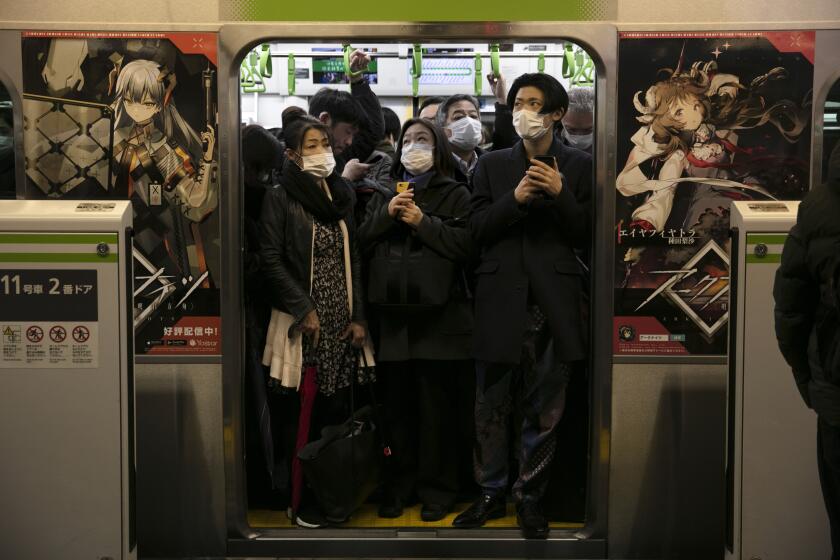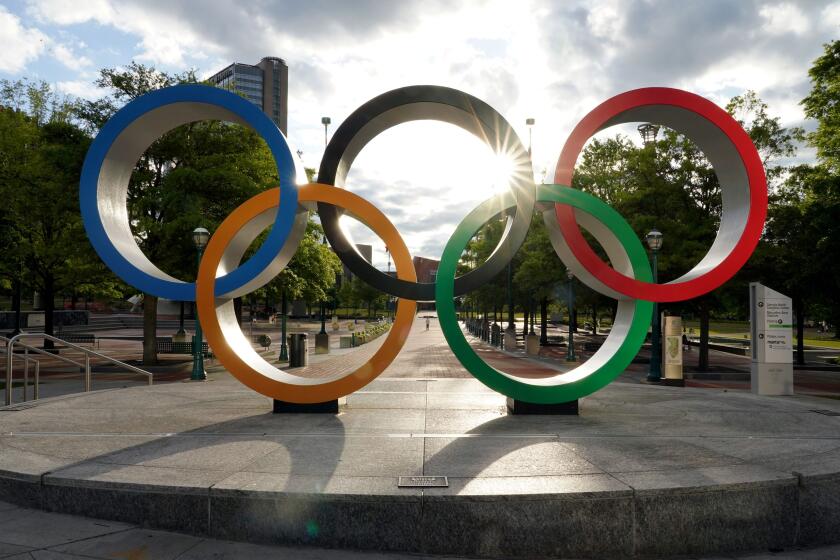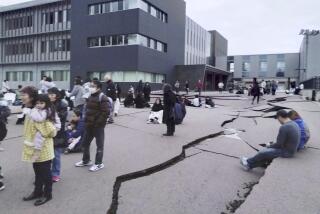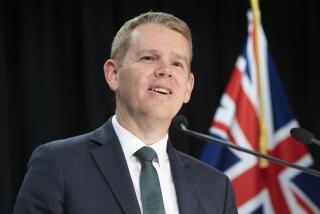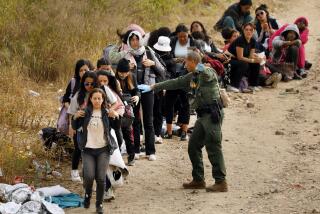Japan lifts coronavirus emergency in Tokyo and all remaining areas
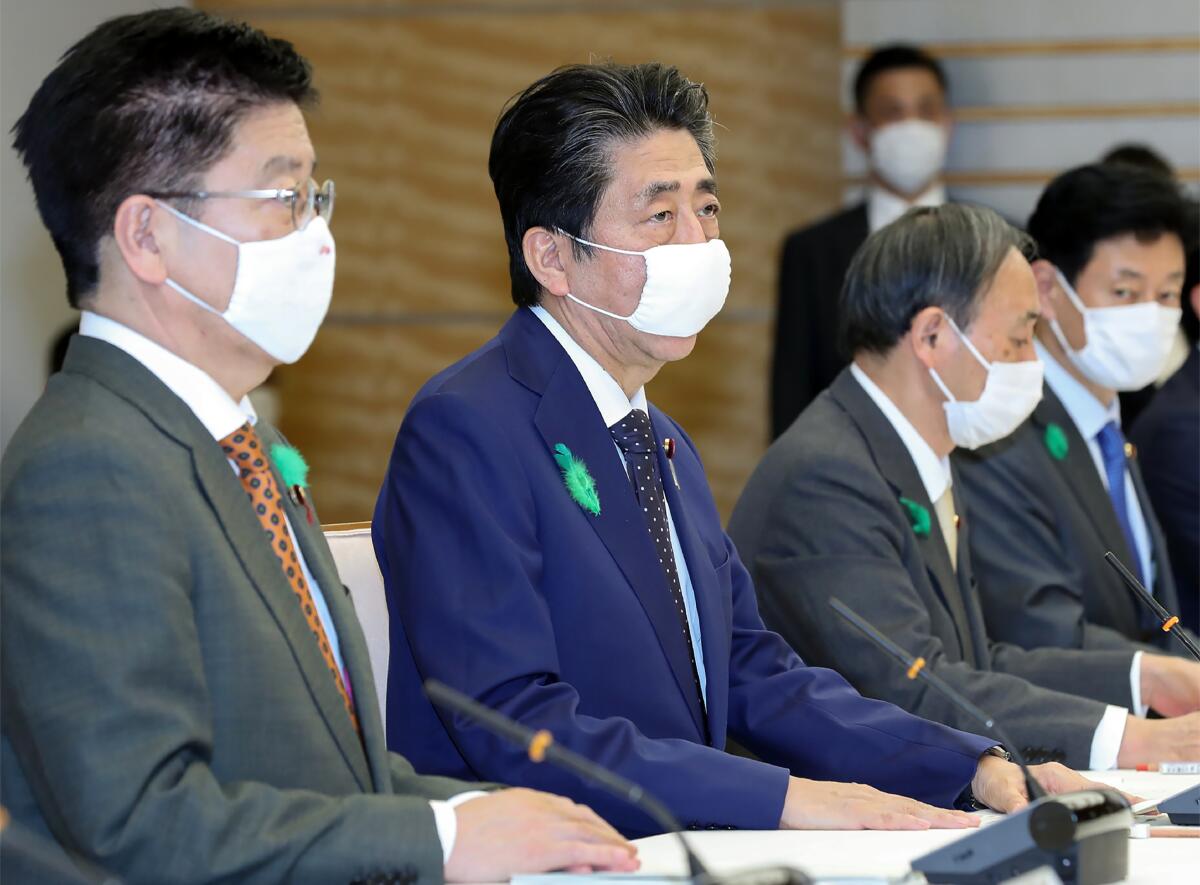
- Share via
TOKYO — Japanese Prime Minister Shinzo Abe lifted a coronavirus state of emergency in Tokyo and four other remaining parts of the country Monday, ending restrictions nationwide as businesses begin to reopen.
Experts on a government-commissioned panel approved the lifting of the emergency in Tokyo, in neighboring Kanagawa, Chiba and Saitama prefectures, and in Hokkaido to the north, which had more cases and remained under the emergency declaration after it was removed in most of Japan earlier this month.
Abe said the lifting of the emergency does not mean the end of the coronavirus outbreak. He said the goal was to balance preventive measures and the economy until vaccines and effective drugs become available.
Japan, with about 16,600 confirmed cases and about 850 deaths, has so far avoided a large outbreak like those experienced in the U.S. and the Europe despite its softer restrictions.
But the world’s third largest economy has fallen into a recession, and public discontent over Abe’s handling of the coronavirus has sent his support ratings tumbling. Recent media surveys show public support for his Cabinet has plunged below 30%, the lowest since he returned to office in December 2012.
Abe declared the state of emergency on April 7 in several parts of Japan including Tokyo, expanded it to the entire nation later in the month and then extended it until the end of May.
Contrary to the ultramodern image of Japan, many Japanese lack the basic tools needed to work from home during the coronavirus outbreak.
Under the emergency, people were asked to stay at home, and nonessential businesses were requested to close or reduce operations, but there was no enforcement. Since May 14, when the measures were lifted in most of Japan, more people have left their homes and stores have begun reopening.
Economy Minister Yasutoshi Nishimura said recent data suggest that infections have slowed enough and pressure on the medical system has fallen enough to allow a gradual resumption of social and economic activity. He said Tokyo, Kanagawa and Hokkaido, where the number of infections is still fluctuating, need to be watched closely.
The International Olympic Committee could lose as much as $800 million as a result of the Tokyo Olympics being postponed because of the coronavirus.
On Monday, Matsuya department store, a landmark in Tokyo’s posh Ginza shopping district, resumed operation. Sales staff wearing plastic face shields welcomed customers with bows but no verbal greetings under new guidelines.
Individual prefectures are allowed to impose their own measures. Tokyo Gov. Yuriko Koike said last week that the capital will reopen in three phases starting with schools, libraries, museums and longer service hours for restaurants. She said theaters, sports facilities and other commercial establishments will be next, with nightclubs, karaoke and live music houses in the final phase.
More to Read
Sign up for Essential California
The most important California stories and recommendations in your inbox every morning.
You may occasionally receive promotional content from the Los Angeles Times.
